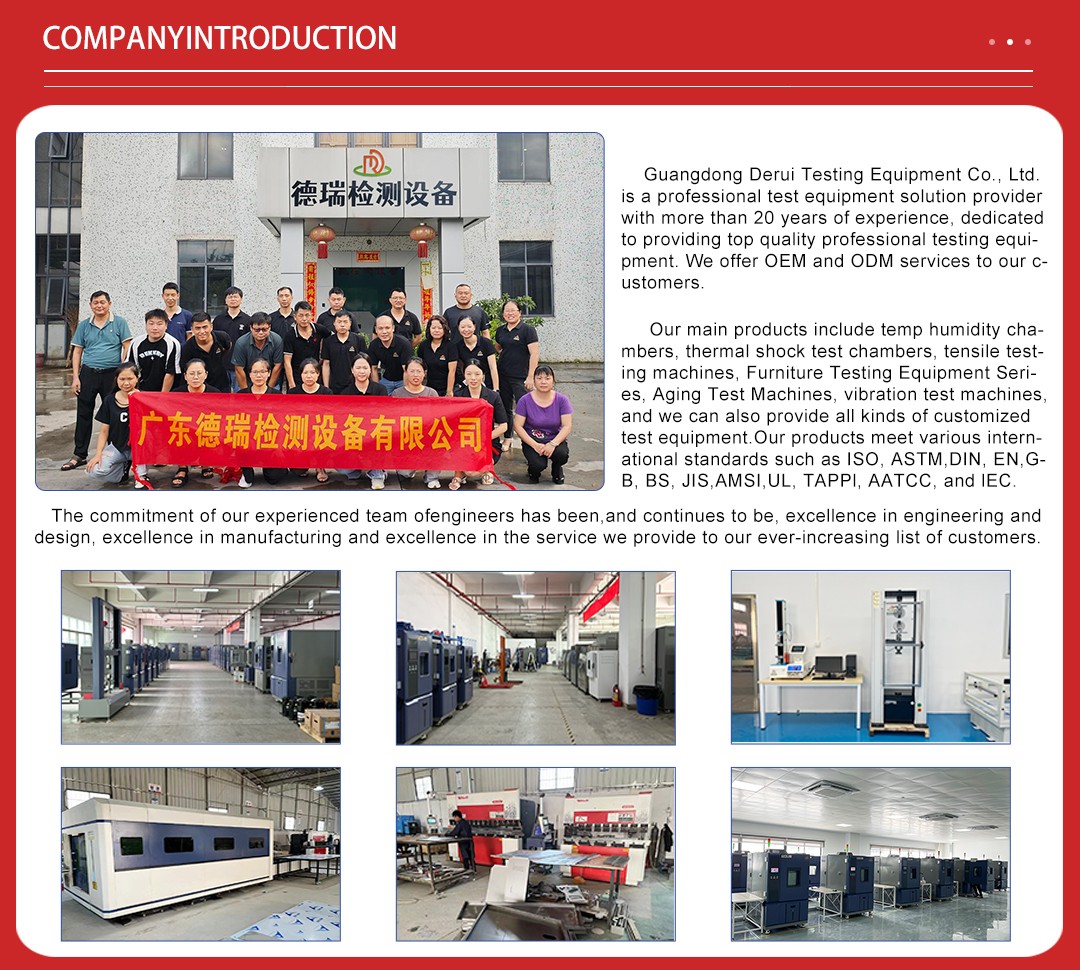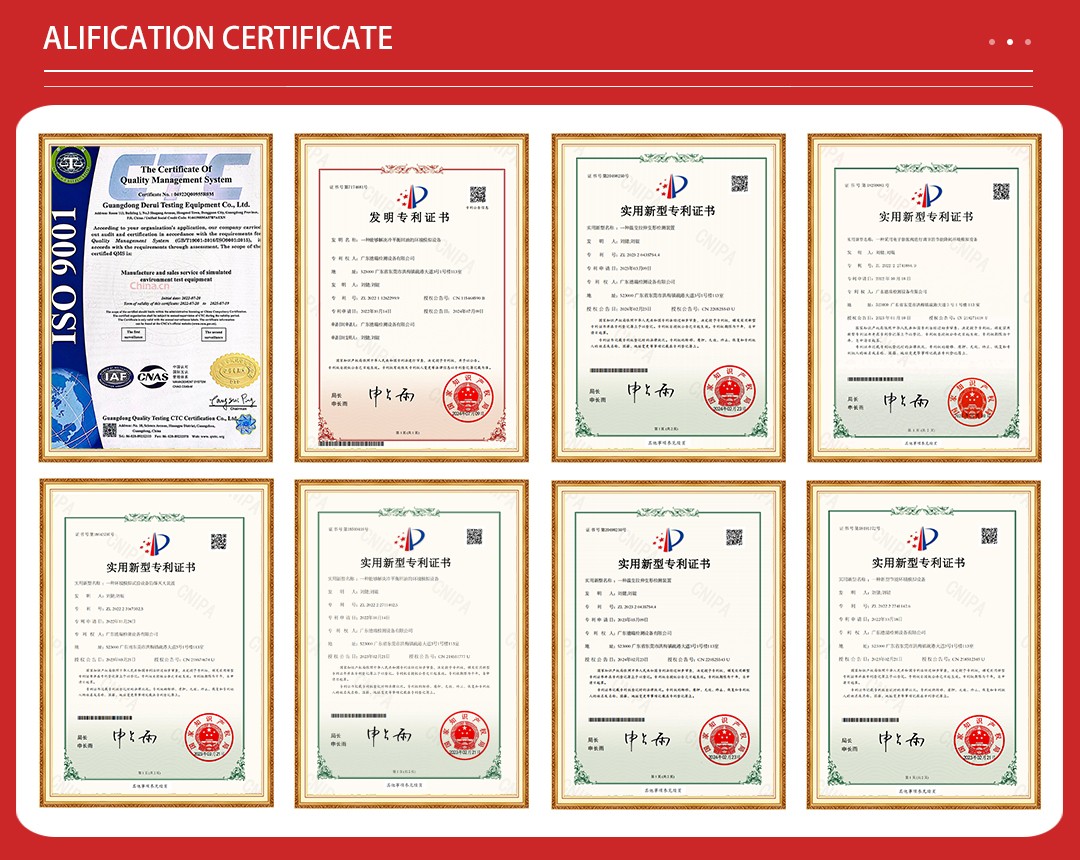
The Temperature and Humidity Test Chamber is a versatile and advanced environmental testing solution designed to evaluate the performance and durability of products under various temperature and humid ...

The Temperature and Humidity Test Chamber is a versatile and advanced environmental testing solution designed to evaluate the performance and durability of products under various temperature and humidity conditions. This specialized equipment plays a crucial role in quality control, research and development, and manufacturing settings, helping manufacturers ensure their products meet the highest standards of reliability and performance.

Temperature and Humidity Test Chambers are extensively used across various industries to assess the performance and reliability of products under controlled environmental conditions. By simulating real-world and extreme temperature and humidity scenarios, these chambers enable manufacturers to identify potential failures, optimize designs, and validate manufacturing processes. Key application areas include the electronics, automotive, aerospace, pharmaceutical, and construction industries, where products are often exposed to diverse and challenging environmental conditions during their lifecycle. For instance, electronic devices must withstand varying temperatures and humidity levels during operation and storage, while automotive components must endure harsh environmental conditions both under the hood and within the vehicle interior.

Operational Flow for Product Performance Evaluation:
1. Preparation: Begin by defining the test parameters, including temperature and humidity ranges, test duration, and any specific environmental conditions to be simulated. Prepare the test samples according to the specified guidelines.
2. Chamber Setup: Program the Temperature and Humidity Test Chamber with the defined test parameters. Ensure that the chamber is properly calibrated and that all sensors and monitoring equipment are functional.
3. Sample Loading: Place the test samples inside the chamber, ensuring they are properly positioned and secured. Close the chamber door and initiate the test cycle.
4. Monitoring: Continuously monitor the environmental conditions within the chamber and the performance of the test samples. Record data at regular intervals to track any changes or anomalies.
5. Analysis: Upon completion of the test cycle, analyze the collected data to evaluate the performance and reliability of the test samples. Identify any potential failures or design flaws and make necessary adjustments.
Common Issues and Solutions:
1. Temperature and Humidity Variability: Ensure that the chamber is properly calibrated and that the environmental conditions are uniformly distributed throughout the test space. Regular maintenance and calibration can help mitigate variability issues.
2. Sample Degradation: If samples show signs of degradation, review the test parameters and environmental conditions to ensure they are within the specified ranges. Adjust the test profile if necessary to better simulate real-world conditions.
3. Data Inconsistencies: Ensure that all monitoring equipment is functional and that data is recorded accurately and consistently. Regularly check and calibrate sensors to maintain data integrity.
Installation Requirements:
1. Power Supply: Ensure a stable and adequate power supply to support the chamber's heating, cooling, and humidification systems.
2. Ventilation: Provide proper ventilation to dissipate heat generated by the chamber and maintain optimal operating conditions.
3. Calibration: Regularly calibrate the chamber to ensure accurate and reliable environmental control and monitoring.
4. Safety Measures: Implement safety measures such as emergency stop functions, door safety interlocks, and over-temperature protection to ensure safe and reliable operation.

1. Precise Environmental Control: Temperature and Humidity Test Chambers offer accurate control and stability of temperature and humidity, ensuring repeatable and reliable test results.
2. Customizable Test Profiles: The chambers allow for the creation of customized test profiles, enabling manufacturers to simulate specific environmental conditions tailored to their products.
3. Real-Time Monitoring: Advanced monitoring systems provide real-time data recording and analysis, allowing manufacturers to track product performance and identify trends or anomalies during testing.
4. Uniform Environmental Distribution: Equipped with advanced air circulation systems, these chambers ensure uniform temperature and humidity distribution throughout the test space, providing consistent test conditions.

| Model | DR-H201 |
| Temperature range | -70~+150℃ |
| Temperature fluctuation | ±0.5℃ |
| Temperature uniformity | 2℃ |
| Humidity range | 20~98%RH (Refer Image below) |
| Humidity fluctuation | ±2.5%RH |
| Humidity uniformity | 3%RH |
| Cooling speed | 1℃/min in average (without loading) |
| Heating speed | 3℃/min in average (without loading) |
| Internal chamber material | SUS#304 stainless steel, mirror finished |
| External chamber material | Stainless steel |
| Cooling method | Air cooling |
| Controller | LCD touch screen, programmable control temperature and humidity Can set different parameter for cyclic test |
| Insulation material | 50mm high density rigid Polyurethane foam |
| Heater | Explosion-proof type SUS#304 stainless steel fins radiator pipe heater |
| Compressor | France Tecumseh compressor |
| Lighting | Heat resistance |
| Temperature sensor | PT-100 dry and wet bulb sensor |
| Observation window | Tempered glass |
| Testing hole | Diameter 50mm, for cable routing |
| Sample tray | SUS#304 stainless steel, 2pcs |
| protection device | Protection for leakage Over-temperature Compressor overvoltage and overload Heater short circuit Water shortage |


Not search wanted products